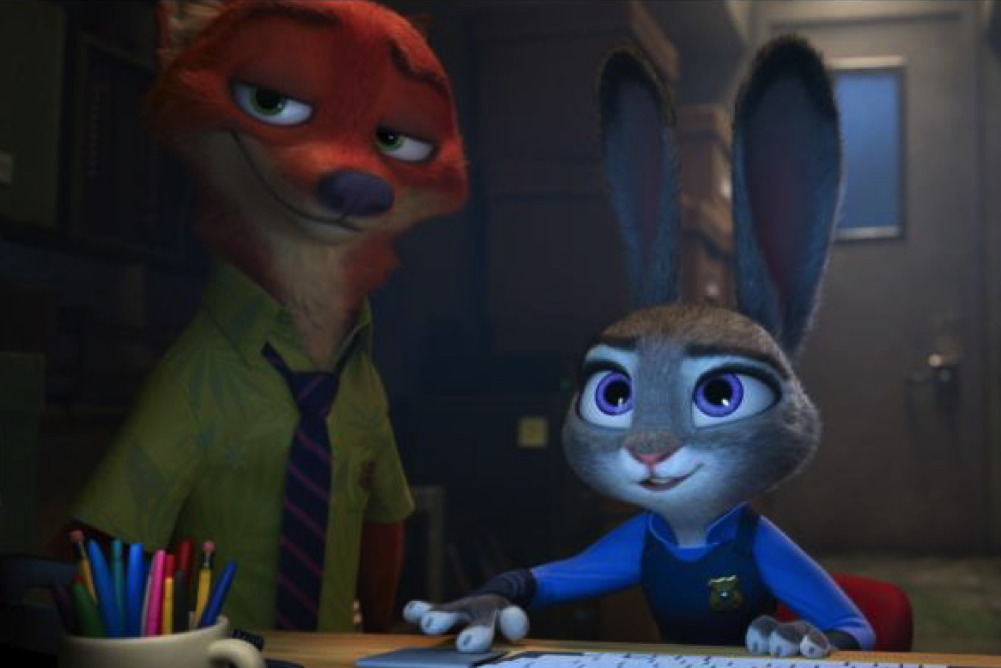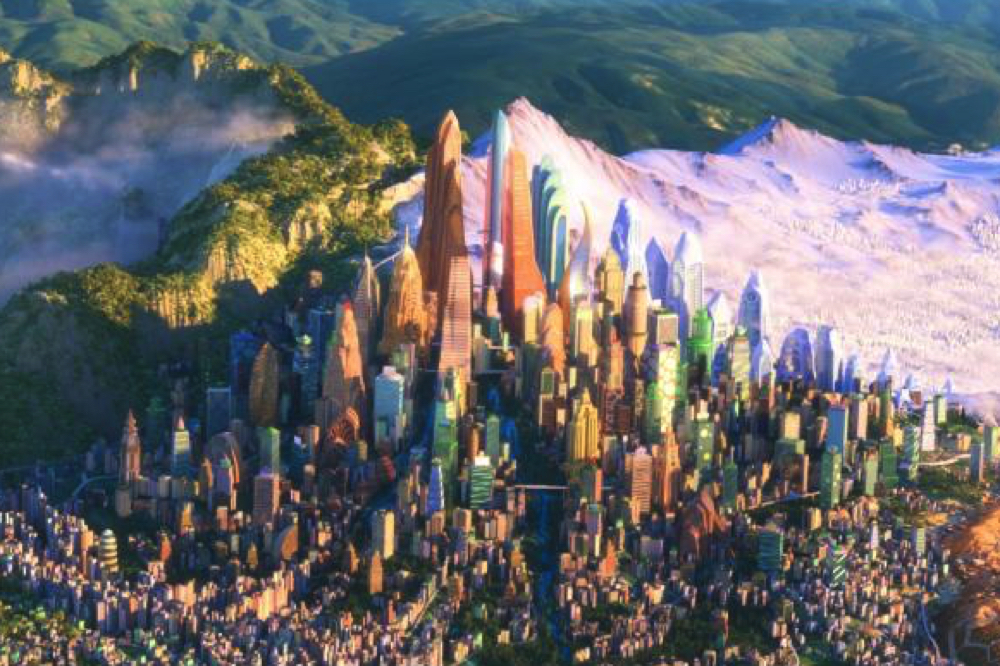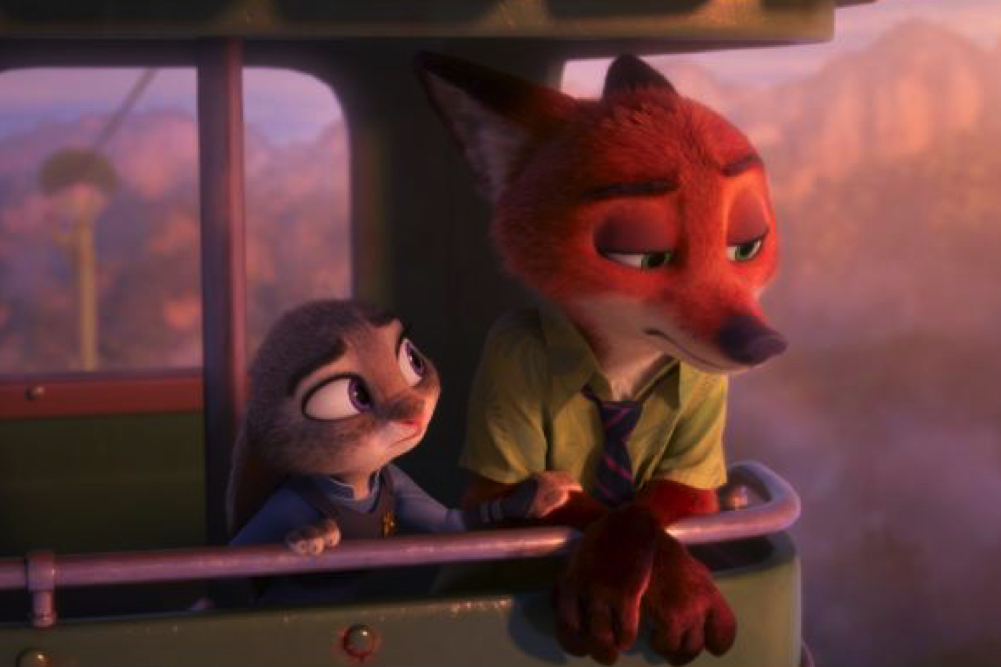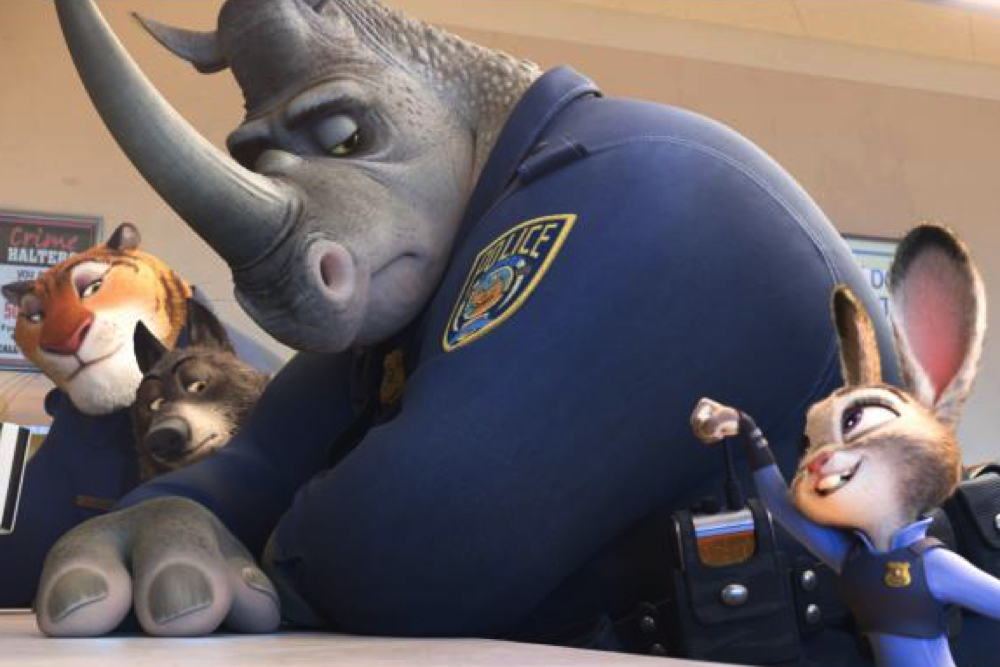
By Darissa Townes, contributor
On Friday, March 4, Disney’s newest film “Zootopia” opened. It’s a story about a rabbit named Judy Hopps (voiced by Ginnifer Goodwin) who leaves her small town to become a police officer in the city of Zootopia, in a world that’s ruled by civilized animals. She becomes the force’s first bunny police officer and is out to prove herself worthy amongst her much larger peers. Along the way, she meets a con artist fox named Nick Wilde (voiced by Jason Bateman) and an unlikely partnership forms between them when Judy takes on a case about a string of recent kidnappings.
When we caught up with Lance Summers, the film’s head of look development, he talked about how the story was more than just showing the world and the fact that animals could talk. He also noted that when they presented the story this way, he and the team at Disney would often forget that the characters of “Zootopia” were animals. When watching the film, you might feel the same way. The characters in this film were incredible, with each one having their own unique charm. From Judy’s optimistic, but sensitive nature, to Nick’s charisma, to Police Chief Bogo’s (voiced by Idris Elba) no-nonsense and impatient attitude, you’re bound to have a favorite character by the end of the film. Judy and Nick in particular have very good chemistry with each other, with witty banter reminiscent of an old married couple.
The animation for “Zootopia” is also top notch, as to be expected of Disney. The film’s visuals are made especially bold by the incorporation of multiple boroughs throughout the city, each with their own unique color palettes. From the blues and whites of the snowy Tundra Town to the orange and yellows of Sahara Square, each set required the visual development crew to figure out the logistics of how they functioned as a city, such as how they received cargo and where roads would go. Very little seemed confusing to me, although an undersea neighborhood would have been a nice addition as aquatic creatures are animals, too.

Now, cartoons about animals behaving like humans aren’t new in the least bit. Ever since the creation of animation, animals have been some of the most common characters. Disney itself has delved into animal-centered content with films such as “Robin Hood,” “Lady and the Tramp” and “Bolt,” among many others. This year in particular will see a number of animated features starring animal characters, like “Kung Fu Panda 3,” “The Secret Life of Pets,” and “Sing.” So what makes “Zootopia” stand out from the rest?
In an almost frightening parallel, “Zootopia” covers the still extremely relevant issue of racial profiling. It’s established early on in the movie that in this animal world, your place on the food chain affects how others see and treat you. “Prey” animals like rabbits and sheep are expected to be quiet and cute, and are pushed around, while “predator” animals are to be feared by the prey and tend to be the ones in charge. Judy in particular was raised to be afraid of predators but goes into the city with an open mind, believing that Zootopia is where such barriers don’t exist. Her mindset might be similar to how many real people see today’s world in which the racial divide no longer exists, when in truth racial profiling is literally killing innocent people. Like the real world, in “Zootopia,” Judy finds out that the city isn’t as accepting as she believed it was.

If there’s any grievance that can be made about this movie, it’s how this message about profiling is being conveyed to its main audience: children. Although the studios may not say so, another reason why animals are so prominent in animation is because children love them. Animation is very much a children’s medium, at least in America, and having colorful animals as the stars promises more children and their families will be watching. But all of these animals may make one question whether children will able to connect the issues “Zootopia” presents with the real-life situations. Adults will make the link right away, as the message isn’t entirely subtle. But how can one be certain that a 10-year-old can connect a rabbit cop’s suspicion of a fox in an ice cream parlor to a human security guard following an African-American couple in a high-end department store? By using animal characters, children may not be able to take the characters seriously and recognize the parallels to real life. It doesn’t help that the main situation the characters face in the movie is adapted slightly to make it impossible for them to be replaced by humans.

But as we know, children are smart and they’ll still be able to understand Judy’s struggles as a rabbit cop in a police force full of bulls, rhinos and cheetahs, even if the racial connection the movie makes flies over their heads.
As a whole, though, “Zootopia” is a gorgeous film with wonderful characters and a message that reflects today’s times. Despite my criticisms, it’s still a Disney film that continues to set the bar for feature animation. Whether you understand the undertones or not, it’s a great film that everyone should see.


























